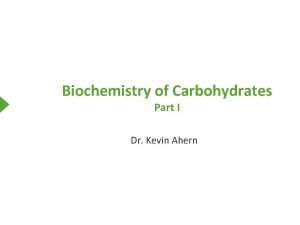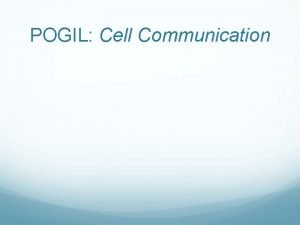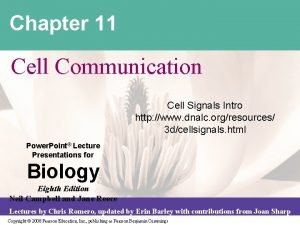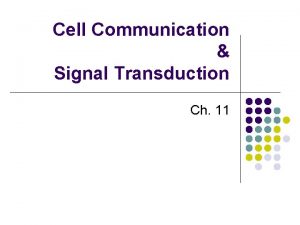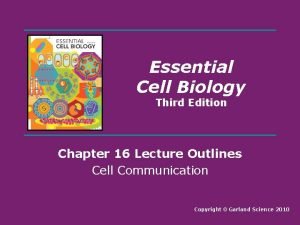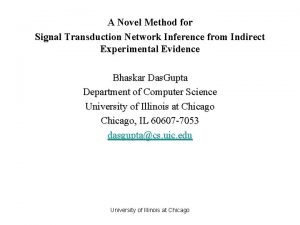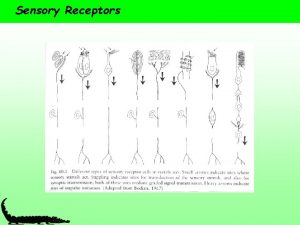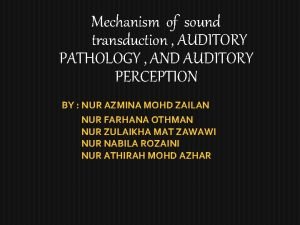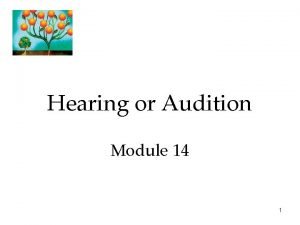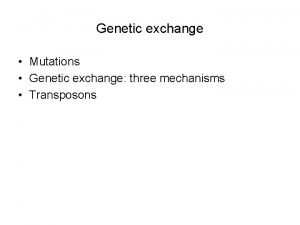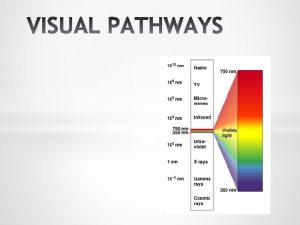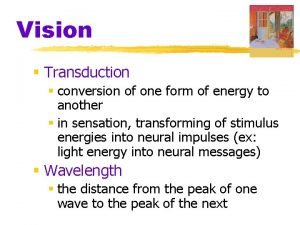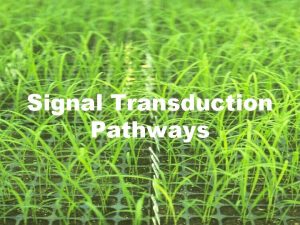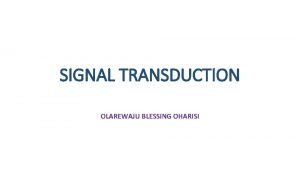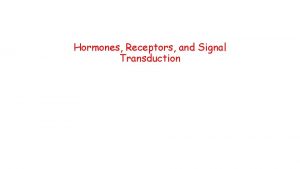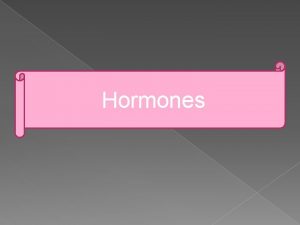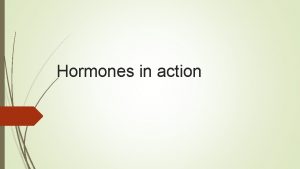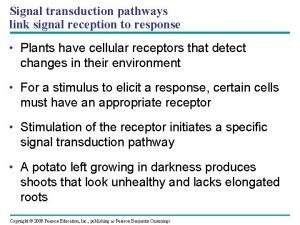Hormones and Signal Transduction II Dr Kevin Ahern




















- Slides: 20

Hormones and Signal Transduction II Dr. Kevin Ahern

Hormones and Signal Transduction • G-Protein Coupled Receptors Outline Receptor G-Proteins Protein Kinase A Kinase Cascade Turning Signal Off The Coffee Connection

Hormones and Signal Transduction • β-adrenergic Receptor Signaling 1 3 2 ATP 4 PKA-Reg 5 a Glycogen Synthase c. AMP 5 PK-P GS-P PK 6 GS P-GP-a 7 Glycogenx-1 GP-b Glycogenx Glucose-1 -phosphate Protein Kinase A Phosphorylase Kinase Glycogen Phosphorylase

Hormones and Signal Transduction • PKA Activation

Hormones and Signal Transduction • Turning Off β-adrenergic Receptor Signaling Turning off the Signaling Pathway β-adrenergic Receptor G-Protein c. AMP Protein Kinase A

Hormones and Signal Transduction • Turning Off β-adrenergic Receptor Signaling Turning Off β-adrenergic Receptor Exterior of Cell ATP ADP Arrestin 4= PO G-Protein Receptor Kinase Cytoplasm Blocks and Favors Endocytosis

Hormones and Signal Transduction • β-adrenergic Receptor Signaling G-protein Inactivation Auto-regulating Inherent GTPase Activity β Hydrolysis γ β γ Phosphate Return to Resting State Adenylate Cyclase Inactivated - no more c. AMP

Hormones and Signal Transduction • β-adrenergic Receptor Signaling PO 4= X

Hormones and Signal Transduction • β-adrenergic Receptor Signaling PO 4= c. AMP Ph os ph PKA PK-P od ies ter as e AMP GS-P P-GP-a Glycogenx-1 Glycogenx Glucose-1 -phosphate Becomes Inactive

Hormones and Signal Transduction • β-adrenergic Receptor Signaling PO 4= c. AMP Ph os Phosphodiesterase is Inhibited by Caffeine ph PKA PK-P od ies ter as e AMP GS-P P-GP-a Glycogenx-1 Glycogenx Glucose-1 -phosphate Drinking Coffee Gives a Small Boost to Blood Glucose by Keeping c. AMP Levels Higher

Receptor Tyrosine Kinases (RTKs) RTKs are Membrane Bound Proteins that Phosphorylate Tyrosines RTKs Play Important Roles in Regulating Cell Proliferation Dimerization Important for Activity ATP ADP RTK

Receptor Tyrosine Kinases (RTKs) Outside of Cell RTK Monomer Lipid Bilayer Transmembrane α-helix Inside of Cell (Cytoplasm) Cytoplasmic Tyrosine Kinase Domain (inactive)

Receptor Tyrosine Kinases (RTKs) Ligand (Hormone) Binding & Dimerization Activation of Tails Autophosphorylation P P PP Active Tyrosine Kinase

Receptor Tyrosine Kinases (RTKs) Assembly of Signaling Complex P P PP SH 2 Domains of Proteins Recognize and Bind Phosphotyrosines P P PP Signaling Complex Communicates Message to Cell (usually by phosphorylation)

Receptor Tyrosine Kinases (RTKs) • RTK Signaling Overview Binding of Hormone to RTK in Membrane Receptor Dimerization Autophosphorylation Signaling Complex Assembly Communicate Message to Cell

RTKs - Insulin Receptor Unlike Other RTKs, Always a Dimer in Membrane Binding of Insulin Activates Autophosphorylation of Tails Other Signaling Pathways Binding of Insulin Autophosphorylation IRS-1 Activation Insulin Signaling Also Activates Phosphoprotein Phosphatase PIP 3 PDK 1 PI 3 Kinase Activation Formation Activation Blood Glucose Levels Fall Cells Uptake Glucose Akt Kinase Activation Stimulate GLUT 4 Movement to Cytoplasm

Glycogen Made PK, GP-a Inactive Hormones and Signal Transduction β- Adrenergic Pathway GS Active Phosphoprotein Phosphatase Activated Blood Glucose Levels Fall G-Protein Glucose Taken Into Cell Adenylate Cylase GLUT 4 Moved to Cytoplasm c. AMP PKA Active PK Active GS Inactive GP-a Active Glycogen Broken Down Blood Glucose Levels Rise Akt Kinase Activation PDK 1 Activation PIP 3 Formation PI 3 Kinase Activation IRS-1 Activation Tyrosine Kinase Activation Insulin Receptor Pathway

RTKs - Epidermal Growth Factor Receptor Tyrosine Kinase Dimerizes on Binding Epidermal Growth Factor (EGF) Involved in Growth, Proliferation and Cell Differentiation EGFR

RTKs - Epidermal Growth Factor Receptor (EGFR) EGFR Signaling, Part 1 EGFR Dimer Autophosphorylated Tyrosines in Cytoplasmic Domain Signaling Complex Assembled on Phosphotyrosines GTP GDP Prepares Cell for Division

In My Liver (to the tune of “And I Love Her”) Copyright © Kevin Ahern Metabolic Melody If I am missing meals On busy days That’s when my body steals Glucose away From my liver It starts with glucagon When I’m weak kneed The hormone acts to spawn New energy In my liver Bridge The signaling Acts rapidly c-A-M-P’s Fire up kinase Phosphorylase then gets Re-activated So glycogen begets Glucose phosphated In my liver Instrumental Then in the last step here A phosphatase Makes phosphate disappear With no delays In my liver
 Kevin ahern biochemistry
Kevin ahern biochemistry Gene expression:
Gene expression: Cellular communication pogil
Cellular communication pogil 3 stages of cell communication
3 stages of cell communication Cell signal transduction
Cell signal transduction Signal transduction
Signal transduction Signal transduction
Signal transduction Signal transduction
Signal transduction Ahern tractors
Ahern tractors Baseband signal and bandpass signal
Baseband signal and bandpass signal Baseband signal and bandpass signal
Baseband signal and bandpass signal Even odd signals
Even odd signals Sensory transduction
Sensory transduction Proprioception vs mechanoreceptor
Proprioception vs mechanoreceptor Transduction in the ear
Transduction in the ear Where does transduction occur in the ear
Where does transduction occur in the ear Transduction in the ear
Transduction in the ear Generalized transduction
Generalized transduction Visual association cortex
Visual association cortex Transduction cognitive psychology
Transduction cognitive psychology Transduction psychology
Transduction psychology
